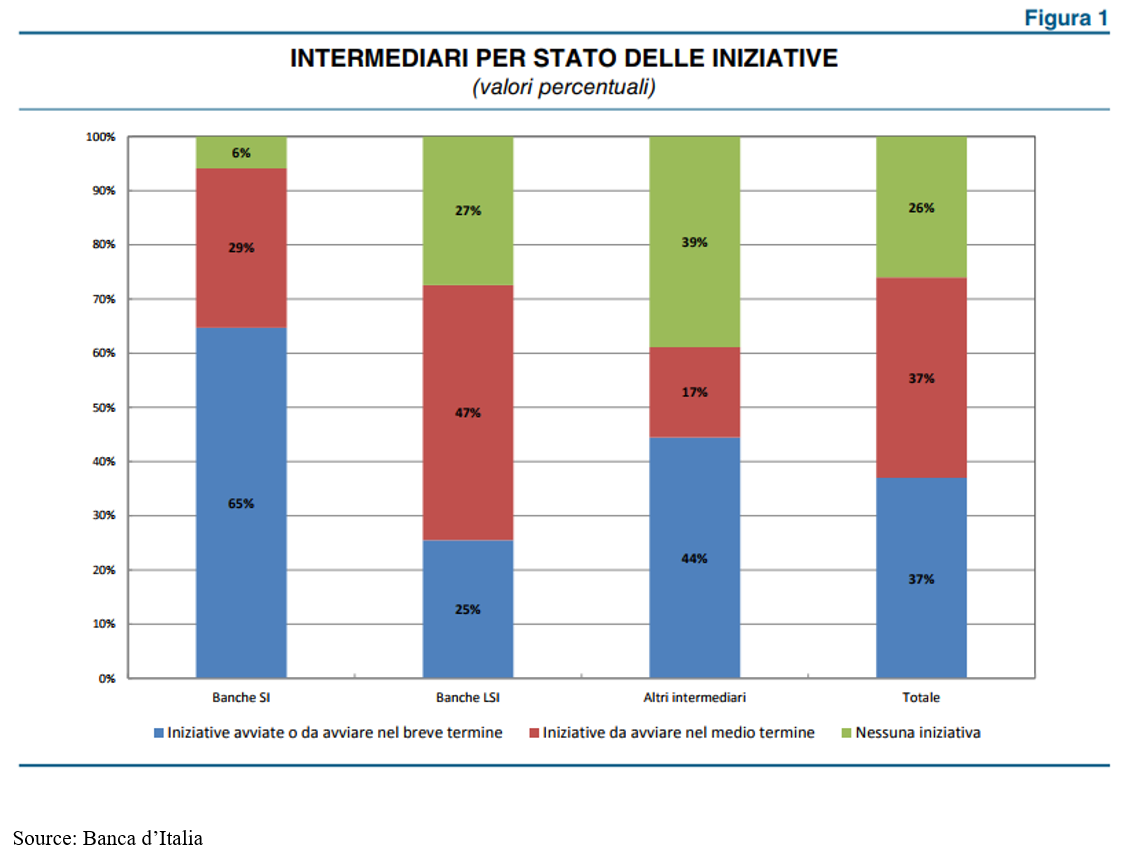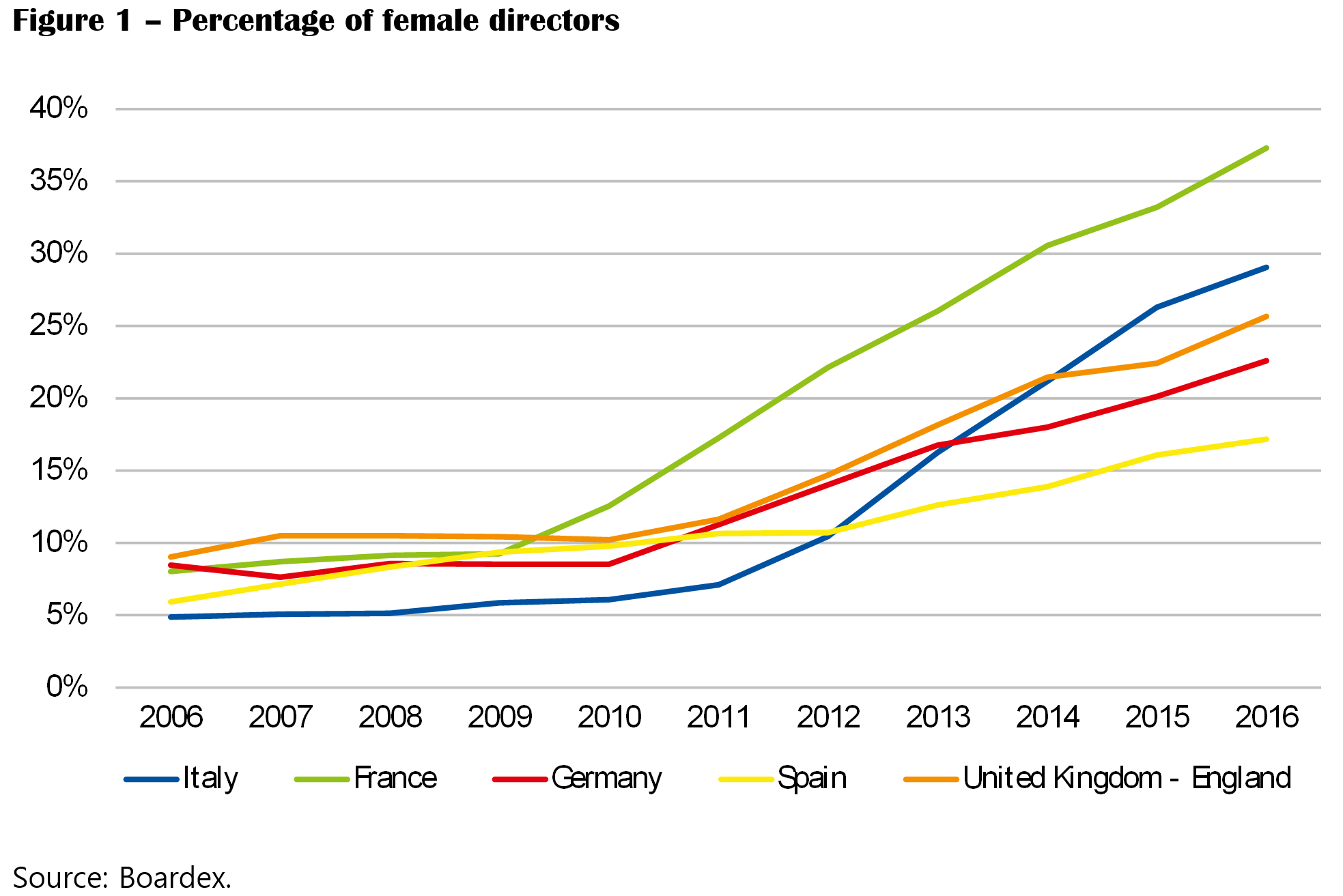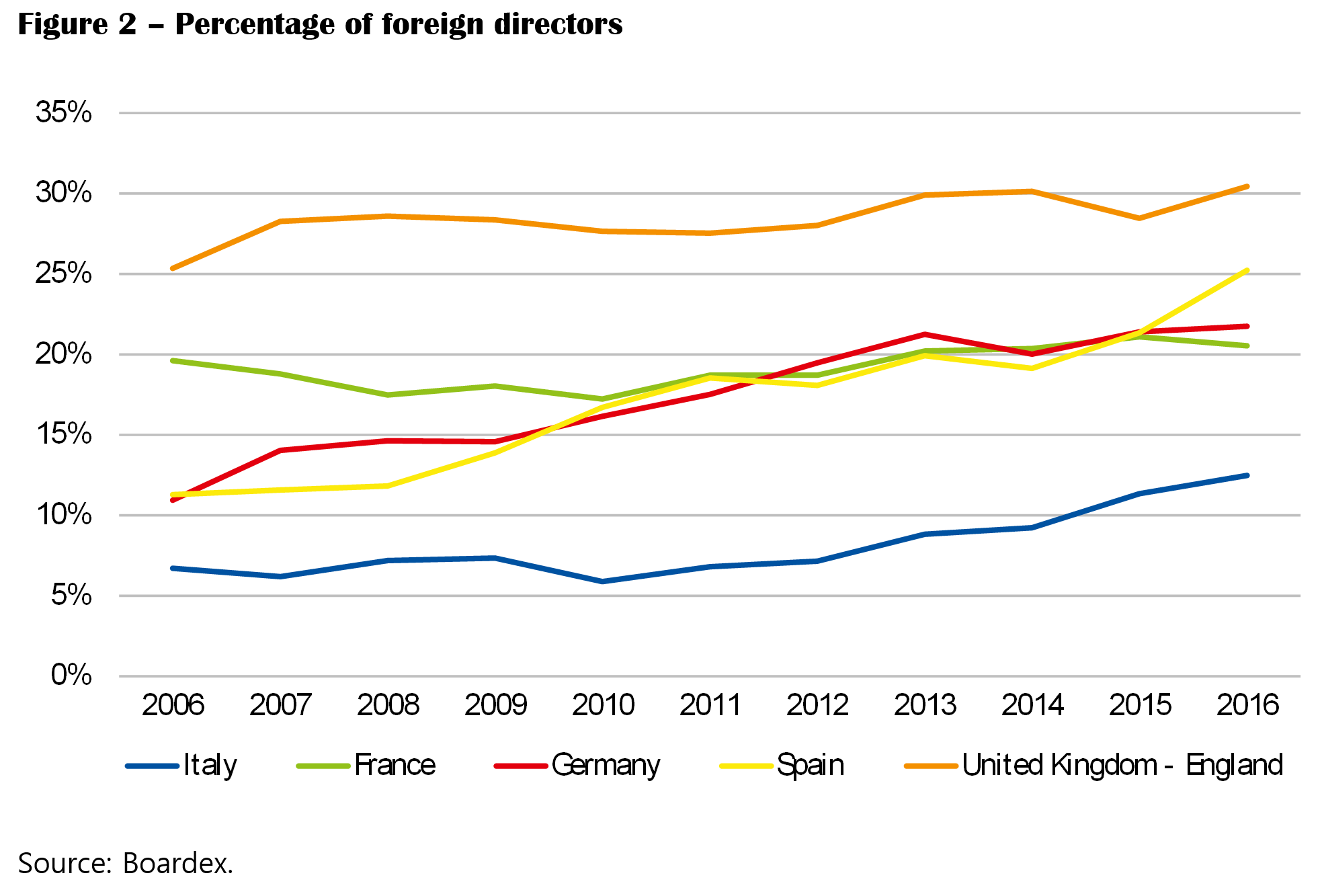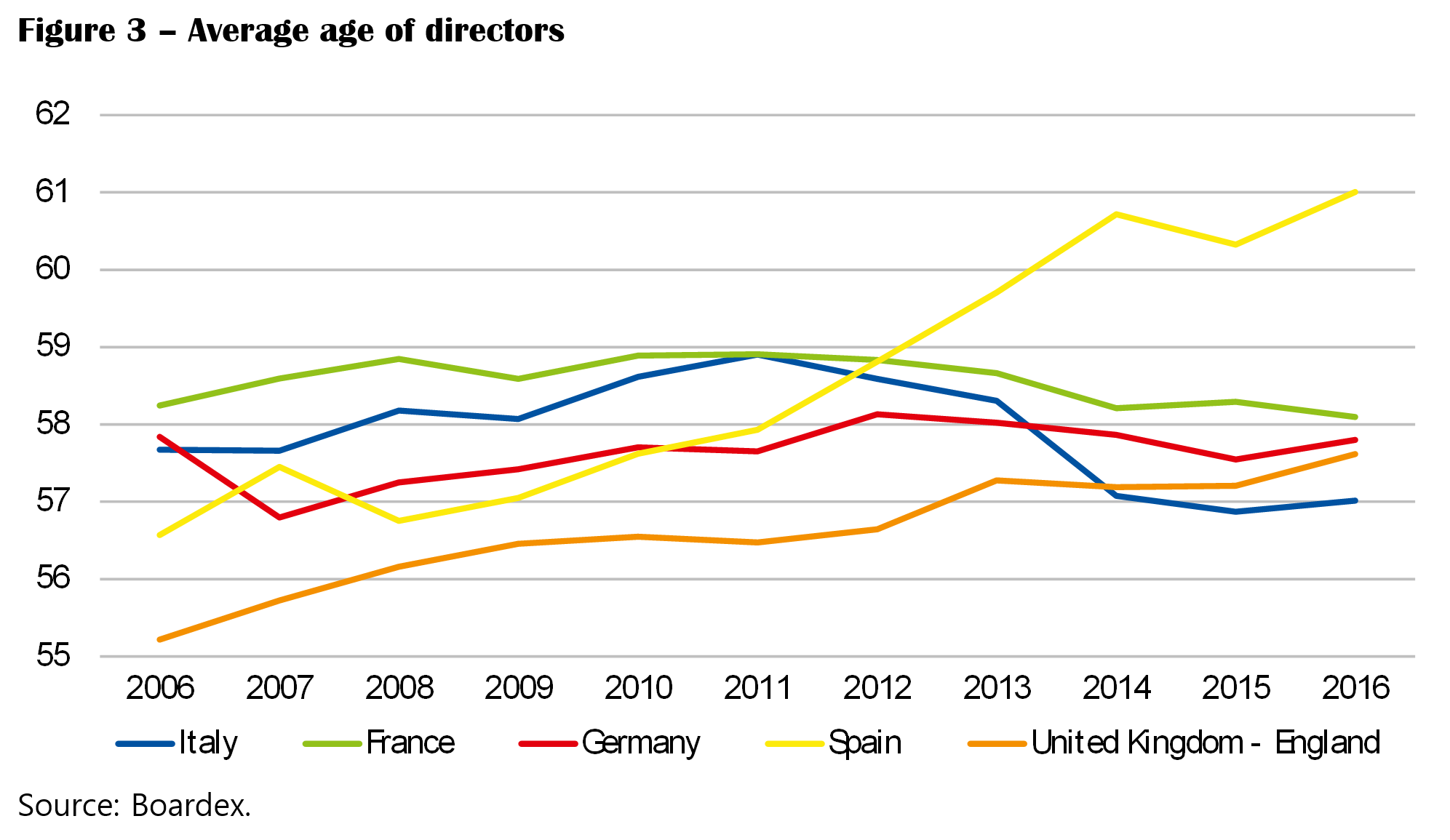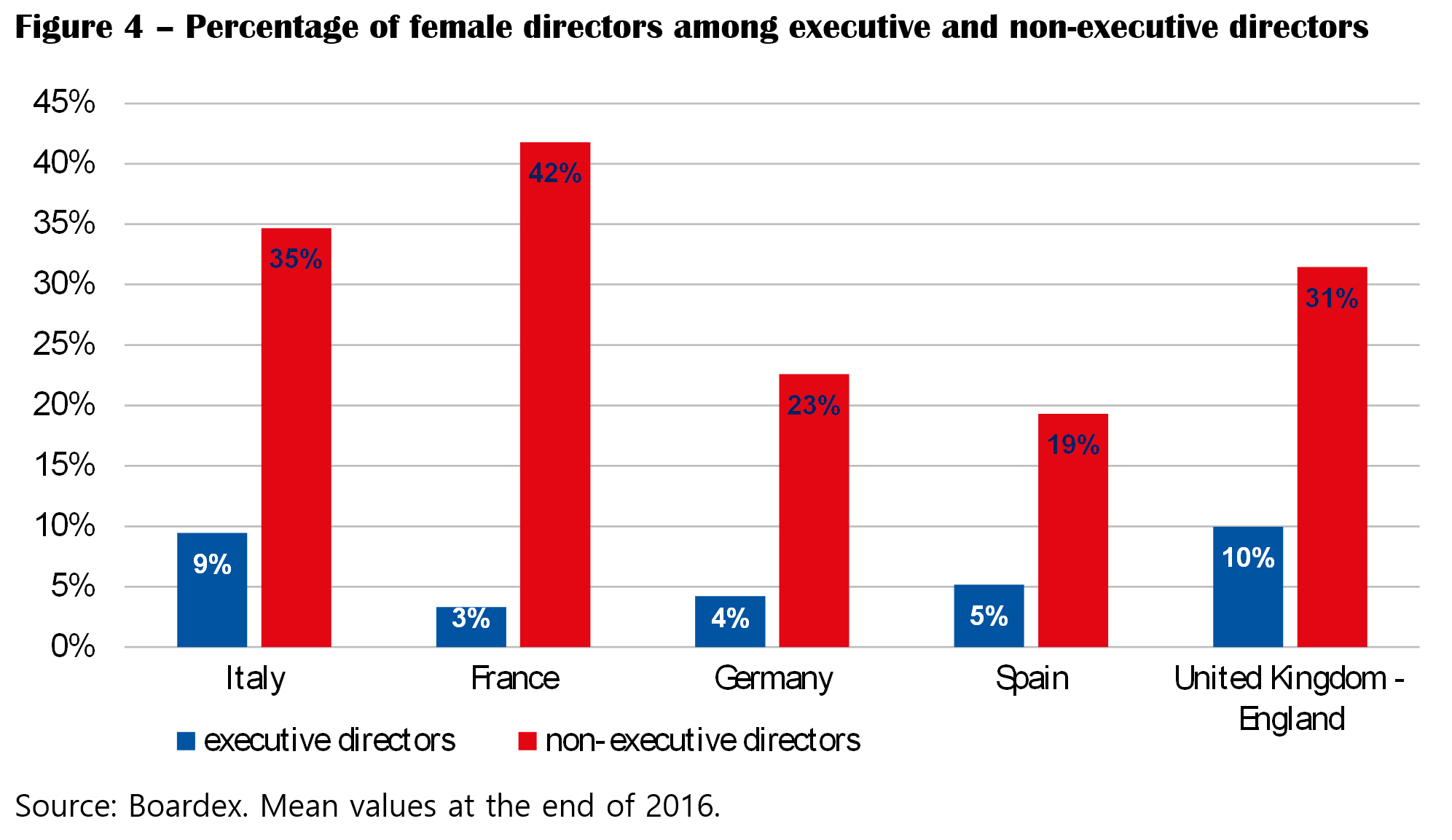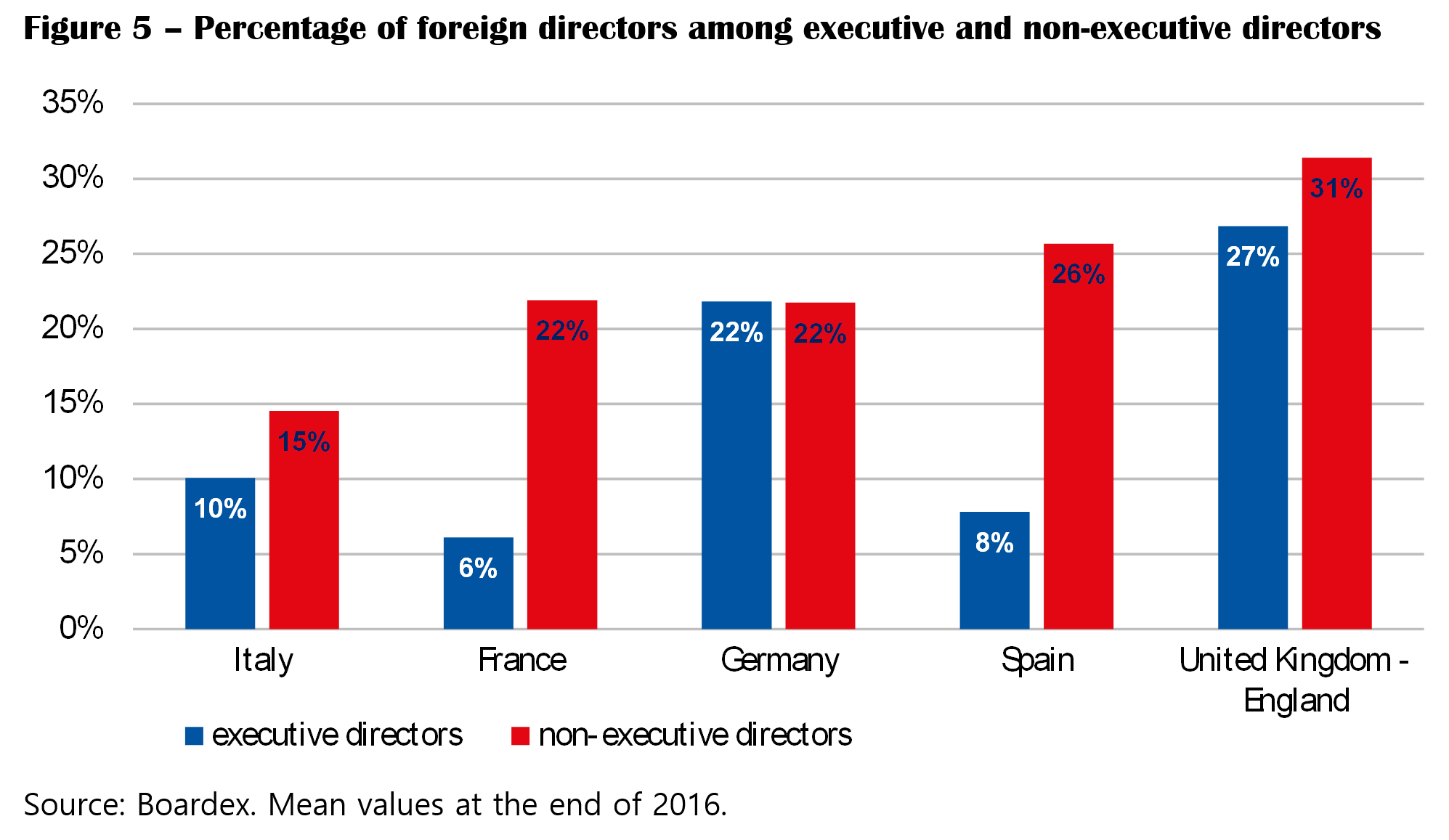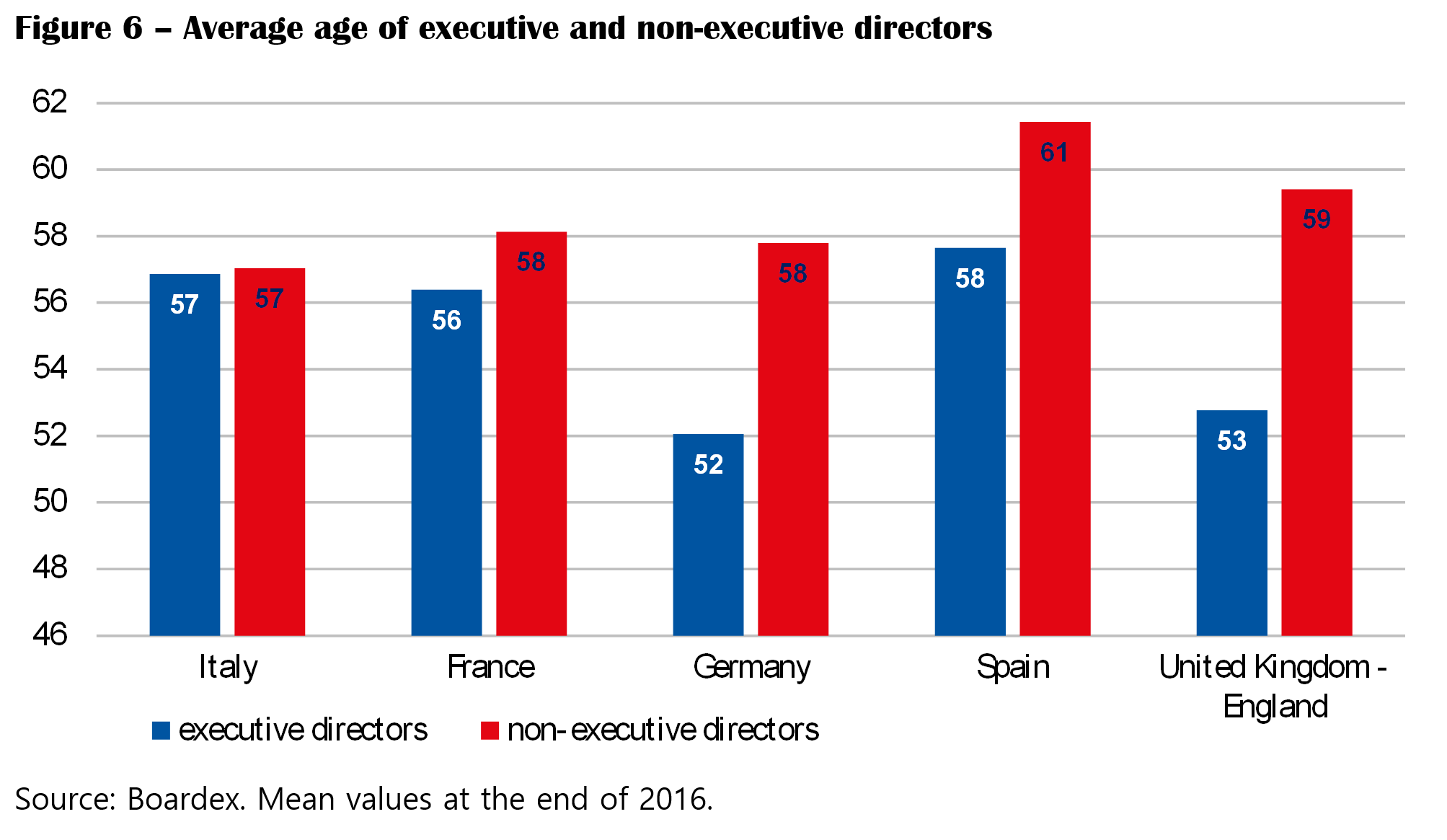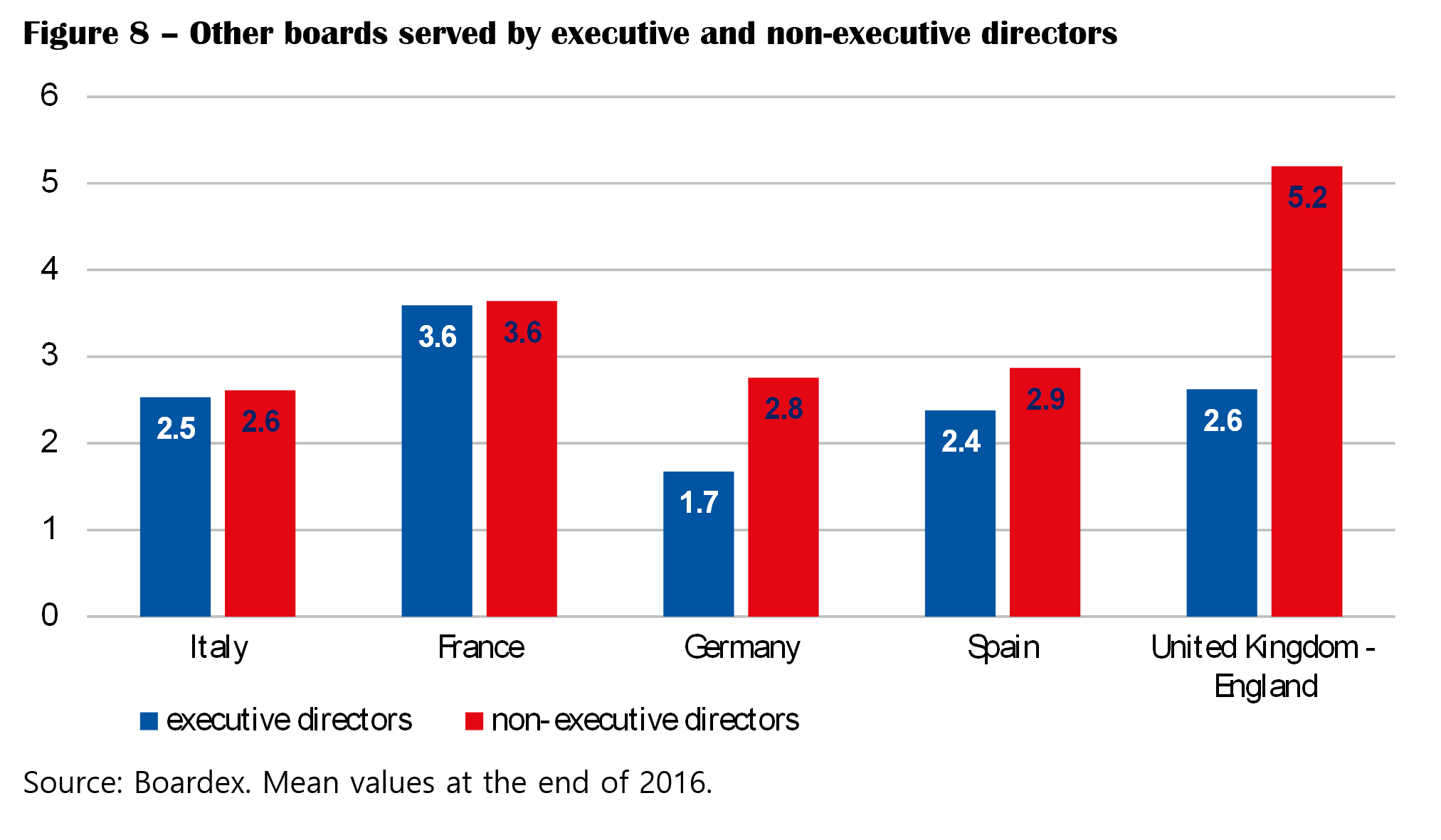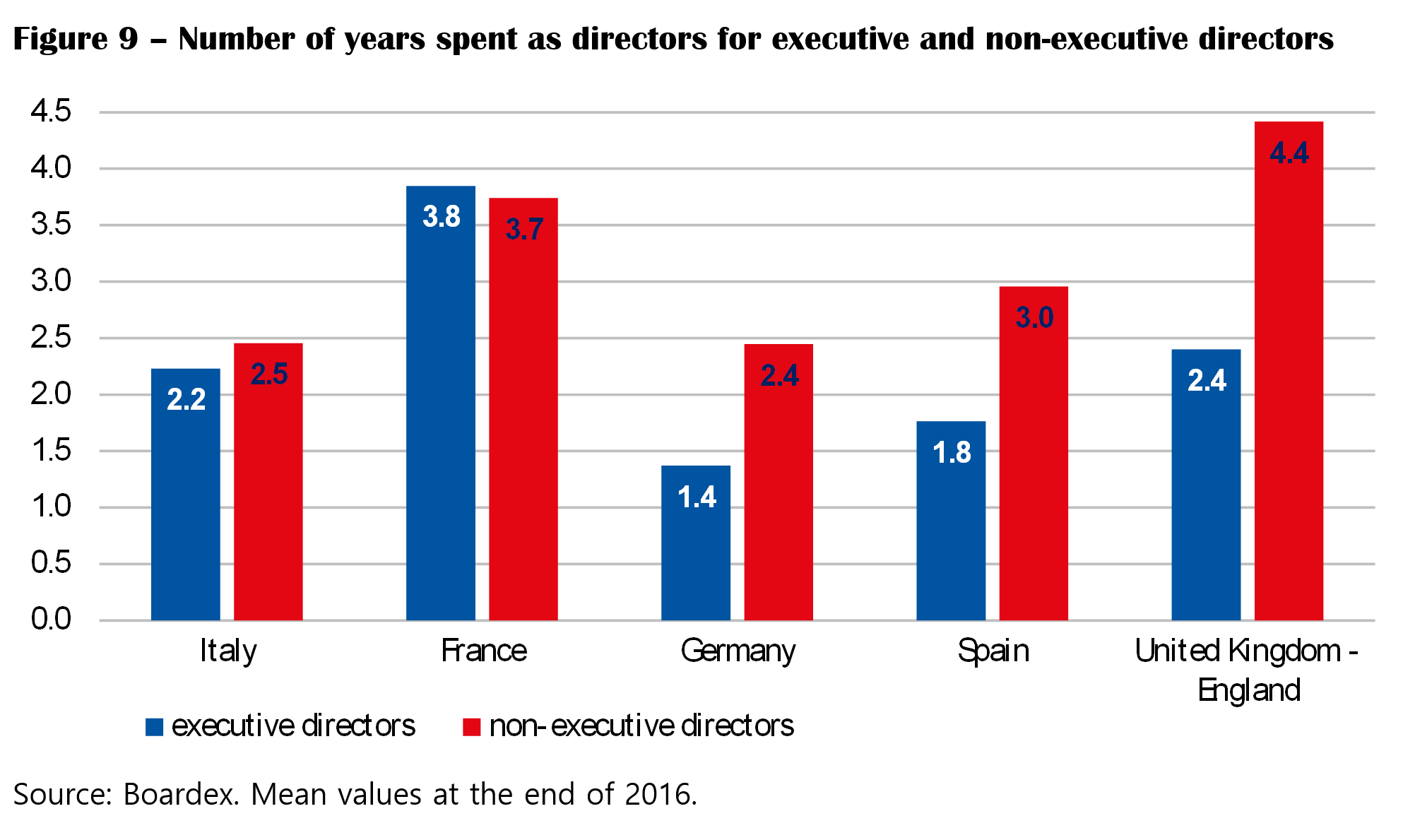L’Autorità Bancaria Europea (European Banking Authority – EBA) ha pubblicato i templates che le banche potranno utilizzare – su base volontaria – per dare informazioni sui propri crediti deteriorati agli investitori che siano interessati ad acquistarli. I templates sono stati sviluppati dall’EBA su richiesta del Consiglio UE, in modo da promuovere la standardizzazione e la comparabilità a livello UE dei dati sui crediti deteriorati e quindi favorire lo sviluppo del mercato di questi attivi.

Before the Christmas holidays break, EIOPA has published a number of documents, as proof of the productive analysis carried out during the last months. The topics concern:
- [18.12.17] the update of the representative portfolio to calculate the Volatility Adjustment (VA)
- [18.12.17] desired improvements to the Solvency and Financial Condition Reports (SFCR)
- [21.12.17] the use of limitations and exemptions from reporting 2017
- [21.12.17] the use of capital add-ons
- [20.12.17] the use of long term guarantees (LTG) measures
The VA is a measure aimed at mitigating the effect of short-term volatility of bond spreads on the solvency position of insurance companies, which sell products with long-term guarantee options. When the asset values fall because of an increase in their credit spreads, the liabilities are lowered thanks to a higher risk free discounting, obtained increasing the risk free yield curve by the VA. This correcting measure is derived from the spreads of representative portfolio of assets, revised by EIOPA on a yearly basis. The updated portfolios are based on data reported by the European insurance companies to their National Supervisory Authorities (NSAs) as part of their annual supervisory reporting. EIOPA published the updated representative portfolios last 18 December 2017; these data are going to be used for the calculation of the VA at End-March 2018. The next update has been scheduled for the second half of 2018.
Last 18 December 2017 EIOPA published a supervisory statement aimed at improving the future disclosures of SFCRs, which have to be published by the undertakings on a yearly basis. The legally prescribed SFCR covers a wide range of areas (in some cases, it replaced the disclosures on embedded value), but EIOPA believes it should focus on relevant information to evidence the solvency and financial condition of the undertakings. The statement focuses on key findings that EIOPA encourages to put in place, still considering the principle of proportionality:
- consider needs and capabilities of different types of stakeholders when deciding upon the content and language style: the summary is mainly addressed to policyholders, while the remaining sections to analysis/investors
- the summary should include a minimum common content (such as business model and strategy, underwriting and investment performance, key risks, system of governance, solvency ratio with and without VA/MA, SCR, MCR, EOF classified by tiers, …)
- even when embedded in an annex to the SFCR, parts of the Quantitative Reporting Templates (QRT) should be reported in the narrative to help the reader
- include information regarding the process for performing the ORSA
- structure in a better way the analysis of the risk sensitivity to different stressed scenarios (e.g. methods used, underlying assumptions, future management actions, impact as an amount of the SCR and as a percentage of the overall SCR ratio, interpretation of the results)
- provide details on methods and main assumptions used to evaluate Assets, Liabilities, Technical Provisions (e.g. specific approach to investment valuations, treatment of deferred taxes, uncertainties underlying the assumptions)
- provide additional information regarding the Own Funds (OF), such as the explanation of their items (e.g. extent to which they are available or subordinated, their durations) and the movements over the reporting period and looking forward.
Insurance undertakings are subject to annual and quarterly reporting, but according to the SII directive the NCAs may exempt or limit the submission of the Quantitative Reporting Templates (QRTs), based, among others, on criteria on market shares, size and SCR ratio; EIOPA has verified to which extent this option has been adopted, publishing a report last 21 December 2017. The main outcomes of the assessment are:
- none of the NSAs has exceeded the national market share thresholds (the number of exemptions varies significantly from 0% to over 15%), 21 NCAs have even decided not to let the undertakings use the possibility
- YE16 – 134 undertakings and 8 groups from 5 Member States were exempted from annually reporting item by item templates, representing 0.4% of the European Economic Area (EEA) Non Life market share and 0.5% of the Life market share
- 1Q17 – 703 undertakings and 21 groups from 10 Member states were exempted from quarterly reporting, representing 4.8% of the EEA Non Life market share and 2.5% of the Life market share
To detect and follow-up on potential inconsistent applications of supervisory powers across Member States, EIOPA has analyzed the application of capital add-ons by the NCAs, extracting the relevant information from the QRT. The NCAs have the possibility to set capital add-on in case of significant deviations regarding:
- the risk profile within the Standard Formula (SF)/ Internal Model (IM) calculation
- the system of governance
- the risk profile when applying the VA/Matching Adjustment (MA)/transitional measures.
There is a large variance in the amount of the capital add-ons which have been imposed: 2 are worth more than 1 billion euro, 3 are between 100 and 700 million and the remaining 19 are below 100 million; relative to the SCR amount, the size of capital add-ons varies between 2% and 85%. As a testimony of the size and complexity of the UK market, 15 capital add-ons were imposed to solo undertakings and 4 at group level; 2 were set in France and Norway, 1 in Ireland. The capital add-ons are balanced between the Life and Non-Life market.
All the 24 capital add-ons were set because of significant deviations regarding the risk profile when compared to the assumption adopted in the SF (22) and IM (2).
Last 20 December 2017 EIOPA published a report on the impact of the LTG measures (a set of measures introduced in the Solvency II directive to ensure an appropriate treatment of insurance product that entail long term guarantees). Those discussed below, applicable on optional basis are:
- Volatility Adjustment (VA) and Matching adjustments (MA)
- Transitional on technical provisions (TTP)
- Duration-based equity risk module (DBER)
- Transitional on the risk-free rate (TRFR)
The aggregated amount of Technical Provisions (TP) of insurance and reinsurance undertakings applying for at least one of these optional measures is 74% of the whole TP of the EEA: more specifically, the VA is used by 66%, the TTP by 25%, the MA by 15%, while DBER and TRFR are used by a negligible share of market participants. Removing the possibility of applying MA, VA, TFR and TTP typically results in an increase of the TP, in a decrease in the OF and in an increase in the SCR and MCR. At EEA level, the removal of those measures is worth for a decrease of the SCR ratio by 69% (from 217% to 148%) and in an increase of the Solvency capital requirements of 73 billion euros.
Long-term guarantees are included in several types of insurance products, and their use is widespread in Europe (being their most significant occurrence in traditional life with profit products); as a trend, their availability is mainly stable or decreasing across EEA, with a shift to unit-linked, pure protection or hybrid products, a decreasing level of financial guarantees included in the contracts or a decreasing duration of the guarantees. In general, the NSAs did not related the trend to the design of the LTG measures but to the low interest rate environment, the increasing cost of guarantees and taxation regulation.
Consob ha adottato il nuovo Regolamento Mercati che recepisce, per la parte relativa ai mercati, le innovazioni normative introdotte dalla nuova disciplina europea in materia di prestazione dei servizi di investimento e di mercati degli strumenti finanziari, così come definita dalla direttiva Mifid2 (2014/65/UE) e dal regolamento Mifir (600/2014).
Tra le novità principali una ridefinizione dei requisiti organizzativi e operativi a carico delle sedi di negoziazione, cioè mercati regolamentati, sistemi multilaterali di negoziazione (Mtf) e la nuova tipologia di sistema organizzato di negoziazione (Organized Trading Facility, Otf). Vengono, inoltre, ridefiniti i requisiti di trasparenza e il reporting delle negoziazioni in strumenti finanziari. Del tutto nuove, invece, le aree dei limiti alle posizioni in derivati su merci e dei servizi di comunicazione di dati.
Il nuovo Regolamento Mercati della Consob, che abroga e sostituisce quello attuale, entrerà in vigore il giorno successivo alla data di pubblicazione in Gazzetta Ufficiale. A far data dall’applicazione del nuovo Regolamento Mercati i soggetti saranno tenuti al rispetto degli obblighi comunicativi ivi previsti al momento dell’autorizzazione o dell’avvio dell’operatività e in occasione dei successivi cambiamenti rispetto alle informazioni fornite.
È stato inoltre previsto un apposito regime transitorio finalizzato a consentire un adeguamento tempestivo ai nuovi obblighi informativi e di comunicazione dettati dal rinnovato Regolamento Mercati ai soggetti che alla data del 3 gennaio 2018 risultino già autorizzati, secondo i rispettivi regimi, e operativi.
Sul sito www.consob.it sono disponibili la delibera di adozione del nuovo Regolamento Mercati insieme alla relazione illustrativa sulle modifiche apportate al Regolamento, comprensiva degli esiti della consultazione svoltasi tra il 31 luglio e il 30 settembre scorsi.
Sono stati pubblicati 2 nuovi aggiornamenti alle Q&A (Questions and Answers) ESMAriguardanti la disciplina MiFID II-MiFIR . Le tematiche coinvolte sono le seguenti:
La Banca d’Italia ha pubblicato una Comunicazione che modifica e integra la disciplina concernente l’applicazione alle SIM e gruppi di SIM delle norme CRDIV/CRR. Ciò risponde all’esigenza di adeguare la normativa applicabile alle SIM all’evoluzione del quadro normativo europeo e di mantenerla allineata a quella delle banche, la cui disciplina è stata oggetto di un intervento analogo.
La modifica normativa entra in vigore dalla data di pubblicazione sulla Gazzetta ufficiale.

Banca d’Italia ha pubblicato i risultati di un’indagine[1] conoscitiva sull’adozione delle innovazioni tecnologiche applicate ai servizi finanziari in Italia, condotta nel mese di maggio 2017. L’indagine ha coinvolto diversi istituti finanziari:
– i 13 maggiori gruppi bancari italiani (c.d. significant institutions) e 4 filiazioni italiane di banche europee a rilevanza sistemica;
– 53 gruppi bancari minori less significant institutions;
– 23 intermediari non bancari (g. SGR, SIM, istituti di pagamento).
Il documento introduce brevemente il concetto di Fintech, definendone gli aspetti fondamentali ed offrendo un overview sulle principali macrocategorie di servizi e tecnologie (crowd-funding, pagamenti, criptovalute, DLT e smart contracts, servizi di conuslenza automatizzati, cloud computing e big data).
Emerge chiaramente la portata disruptive del fenomeno che investe di sé ogni segmento ed attore del mercato dei servizi finanziari e bancari. La complessità del fenomeno Fintech si rileva, per altro, dalla pluralità stessa dei soggetti coinvolti: dai più tradizionali istituti finanziari sino ai giganti della tecnologia informatica e dei social media (Google, Facebook, Apple, Amazon, Alibaba) passando per il mondo start-up, la cui flessibilità e capacità di creare innovazione consentono loro di giocare un ruolo chiave.
A titolo d’esempio, basta pensare che, durante il Chinese Singles’ Day 2017, sono stati transati più di $ 25 mld solo su piattaforme Alibaba, con un picco di 256.000 transazioni per secondo (circa 4 volte la capacità del circuito Visa); nel frattempo Amazon e Facebook lavorano sull’ampliamento della propria offerta di servizi finanziari ed anche assicurativi.
Con il suo impatto rivoluzionario, il Fintech mina il carattere tradizionalmente monolitico del sistema bancario aprendo le porte a nuovi players che, se da una parte colmano lacune esistenti nel mercato dei capitali, dall’altra costringono gli attori tradizionali ad una riflessione sulla validità prospettica dei propri modelli di business.
All’incertezza circa gli senari futuri del fenomeno fa eco un crescente impegno internazionale nello sviluppo di progetti Fintech: i fondi stanziati a livello globale per iniziative di questo genere ammontano a oltre $ 25 mld e vedono Nord America ed Asia leader negli investimenti, sia pur con profili molto diversi.
La rilevanza del fenomeno ha attratto l’attenzione degli organismi di vigilanza e di regolamentazione nazionali ed internazionali, interessanti ad approfondire il fenomeno e comprendere come ponderare gli interventi normativi al fine di favorire l’innovazione senza lasciare spazi a potenziali arbitraggi regolamentari. Numerose risultano, per altro, le iniziative di indagine ed approfondimento sul tema avviate da Financial Stability Board, Basel Commitee on Banking Supervision, European Commission, EBA, ESMA, EIOPA e BCE.
Dall’indagine condotta da Banca d’Italia emerge un dato rilevante: nonostante l’interesse da parte di molti operatori, nel complesso le somme stanziate in Italia nel corso del 2016 per finanziare iniziative Fintech sono state piuttosto limitate (€ 135 mln. ca.). Il 92% degli investimenti totali proviene dalle banche significative.
Il grado di coinvolgimento, anche prospettico, delle banche italiane di grande dimensione sembra comunque essere consistente: tre quarti di queste hanno in previsione di effettuare investimenti – almeno nel lungo termine – in tecnologie e servizi Fintech (cfr. Figura 1).
Le principali macrocategorie di interesse per le banche significative risultano essere:
- Servizi automatizzati per il cliente quali roboadvisors e servizi di customer relationship management automatizzati (g. chatbot);
- Tecnologie a supporto come big data, cloud computing, open API e AI.
Dal canto loro le banche di minori dimensioni (LSI) hanno diversificato i propri investimenti su tutte le principali macrocategorie[2] del Fintech fatto salvo per crowd-funding, criptovalute e DLT & smart contracts. Gli altri intermediari, invece, hanno concentrato le proprie risorse principalmente su progetti d’investimento legati al crowd-funding.
Risulta interessante notare come il mondo bancario e finanziario italiano non abbia, per il momento, destinato risorse al mondo delle criptovalute; marginale risulta per altro l’interesse nei confronti di DLT & smart contracts.
La segmentazione delle strategie di sourcing evidenzia come solo un numero limitato di enti sfrutti le potenzialità offerte da sinergie con imprese e start-up Fintech (anche all’interno di incubatori ed acceleratori), preferendo soluzioni in house.
I maggiori vincoli allo sviluppo del Fintech in Italia sono individuati nell’incertezza del quadro normativo di riferimento in materia di protezione dei dati personali, contrasto al riciclaggio, trasparenza e correttezza, utilizzo di strumenti digitali nonché fiscalità.
In particolare, l’attuale quadro regolamentare in materia di tutela della riservatezza e protezione dei dati personali sembra essere eccessivamente restrittivo. Per altro, come sottolineato dal documento, i requisiti di sicurezza previsti per il trattamento e la circolazione dei dati in relazione a servizi di pagamento e tecnologie per la conclusione dei contratti appaiono assolutamente inadeguati.
Le incertezze circa le tempistiche di emanazione dei technical standards e delle guidelines di PSD II e l’attuazione degli stessi, rappresentano anch’essi un freno allo sviluppo di nuove opportunità.
Nonostante le numerose incertezze, dall’indagine di Banca d’Italia emerge tuttavia l’immagine di un sistema finanziario seriamente interessato alle opportunità del Fintech e conscio delle possibilità legate alle nuove tecnologie. Si vanno delineando i giusti presupposti affinché il Fintech divenga il volano per la riorganizzazione dei modelli di business tradizionali, l’ottimizzazione di processi interni e lo sviluppo di nuovi servizi.
[1] http://www.bancaditalia.it/compiti/vigilanza/analisi-sistema/stat-banche-intermediari/Fintech_in_Italia_2017.pdf?pk_campaign=EmailAlertBdi&pk_kwd=it
[2] Le principali macrocategorie di servizi e tecnologie Fintech cosi come definite nel documento sono: crowd-funding, pagamenti, servizi automatizzati per il cliente, strumenti e tecnologie per la conclusione di contratti ed operazioni a distanza, valute virtuali, DLT e smart contract, tecnologie e servizi di supporto.

Bitcoin mania. Al tempo di internet e dei social network le bolle corrono veloci: il valore di un bitcoin è passato da 1.000 dollari di inizio gennaio a circa 17.000 dei nostri giorni. Il bello è che di fronte alla domanda quanto vale un bitcoin? … Nessuno sa dare una risposta.
E’ un po’ curioso che mentre si discute in modo scomposto – senza peraltro venirne a capo – su un fatto molto grave come le ‘‘sole’’ rifilate dalle banche ai risparmiatori, la vicenda bitcoin venga vista con indulgenza, quasi come una innocua scommessa calcistica. Il fenomeno in realtà è serio. Oramai il mondo bitcoin vale 250 miliardi di dollari a livello mondiale (dieci volte gli aiuti di stato alle banche italiane) e riguarda alcune decine di milioni di persone. Non si scappa, i casi sono due: o si tratta di una bolla che si autoalimenta ed è destinata a scoppiare, o di uno dei rari casi nella storia dell’umanità di corsa all’oro: chi primo arriva si fa ricco.
Cerchiamo di capire il perché di questa corsa e le scommesse che porta con sé.
Il bitcoin è una moneta, come l’euro e il dollaro, in quanto può essere utilizzata come mezzo di pagamento in transazioni che vengono effettuate su una piattaforma digitale chiamata blockchain. Per avere accesso a questo circuito occorre cambiare gli euro (o altra valuta) in bitcoin, operazione che può essere fatta tramite un cambia valuta su internet. Si tratta dunque di una moneta che esiste solo nel mondo digitale (criptovaluta). Le transazioni sulla blockchain vengono validate dai nodi della rete (minatori) che risolvendo un complicato problema matematico, utilizzando computer potentissimi e un’enorme quantità di energia elettrica (pari a quella consumata dall’Irlanda ad oggi), certificano la loro validità andando a verificare il possesso dei bitcoin e registrando il trasferimento. Tutto sotto condizione di anonimato dei soggetti coinvolti che vengono identificati con un codice. Il sistema di validazione da parte dei minatori permette di costruire la fiducia tra i contraenti e crea le condizioni per dare corso ad uno scambio.
La credibilità rappresenta la prima scommessa: che il sistema della blockchain sia a prova di manipolazione. Fino ad adesso la blockchain è stata popolata da molti minatori ma stanno emergendo grandi attori che svolgono un ruolo preminente nel processo di validazione. Cosa succede se questi assumeranno comportamenti non neutrali? Anche l’anonimità può mettere a rischio questo sistema che infatti è utilizzato correntemente per operazioni di natura dubbia (hackeraggio compreso). L’integrità e la solidità del sistema sono due punti critici.
Dove risiede il valore del bitcoin? Nella fiducia che questo strumento verrà utilizzato in futuro come mezzo di pagamento. Qui viene il problema vero per capire il suo valore. Le banconote che abbiamo oggi nel portafoglio hanno un valore in quanto sappiamo che le potremo usare domani per acquistare il pranzo. Questo è dovuto al fatto che la banca centrale assegna alla moneta la caratteristica di essere ‘‘corso legale’’: per legge non può essere rifiutata per estinguere le obbligazioni pecuniarie. Il bitcoin non gode di questa caratteristica e nasce proprio dalla volontà dei partecipanti alla blockchain di sfuggire alle maglie della banca centrale.
Banalmente se i bitcoin mi permetteranno di acquistare beni e servizi in futuro sulla blockchain allora hanno un valore in termini di moneta corrente. Questa è la seconda scommessa: che i bitcoin e la blockchain saranno usati in futuro per effettuare transazioni. Difficile da dire. Ad oggi le transazioni che usano bitcoin come strumento di pagamento sono in numero insignificante, il meccanismo della blockchain è infatti inefficiente e estremamente costoso rispetto a quelli utilizzati correntemente.
La corsa dei bitcoin è dovuta anche al processo con cui vengono generati i bitcoin. Il meccanismo è geniale e consiste nel generare bitcoin come ricompensa nel momento in cui un minatore valida una transazione. Questo ha portato ad un processo che si autoalimenta: i nodi hanno interesse a validare le transazioni in quanto così ottengono bitcoin e diventano ricchi (in moneta virtuale). La crescita del valore dei bitcoin è dovuta al fatto che la ricompensa per la validazione di una transazione diminuisce nel tempo (si dimezza ogni quattro anni), e la quantità complessiva di bitcoin che sarà emessa di qui a cento venti anni è fissata a priori in 21 milioni, ad oggi ne sono già stati messi circa 17. La ricompensa per la validazione dei nodi diminuirà in modo vertiginoso, questo da un lato rende gli attuali bitcoin molto pregiati in previsione dell’estinzione di nuovi bitcoin (una sorta di oro digitale), dall’altro lato se la ricompensa diminuisce può venir meno ‘‘l’olio’’ che facilita il processo di validazione. La terza scommessa è appunto cosa succederà se nessuno avrà più interesse a validare le transazioni? Nessuno lo sa.
Abbiamo infine una scommessa più di fondo: siamo davvero interessati ad una moneta che sfugga completamente al controllo delle autorità monetarie che usano la quantità di moneta per gestire il ciclo economico? Difficile pensare che questo sia realistico e auspicabile.
Bitcoin porta con sé almeno queste quattro scommesse. Difficile credere che le possa vincere in modo convincente e di sicuro meritano una attenta valutazione da parte di una persona che voglia partecipare alla grande abbuffata virtuale.

In the last years diversity on boards, especially of non-executive board members, has become a key issue of corporate governance. Arguments in favor of diversity highlight the benefits both in terms of efficiency and better monitoring. Diversity (of gender, nationality, age, professional background) is deemed to broaden the debate within the boards and help to avoid the danger of “groupthink”; to increase creativity and innovation; to improve problem solving and promote the exchange of ideas, providing new insights and perspectives to the board. Firms, however, can incur also costs from greater diversity, due to communication and coordination problems, higher conflicts among directors, longer decision-making process.
Since 2010, following the 2007-2008 financial crisis, the issue has been addressed by the European Commission (EC) in the Green Paper “Corporate governance in financial institutions and remuneration policies”, where it is underlined how a lack of diversity within boards could in some cases have contributed to the failure of non-executive board members to effectively challenge management decisions. The topic of board diversity was then re-addressed in the 2011 Green Paper on corporate governance, where the EC restated the importance for listed companies of having diverse non-executive members. Recently, the EC has adopted the Directive 2014/95/EU that requires to certain large companies to disclose information on the policy adopted in relation to board diversity.
The European Commission has also devoted special attention to a specific aspect of diversity, namely gender diversity. In November 2012, the Commission proposed legislation with the aim of attaining a 40% objective of the under-represented sex in non-executive board-member positions in publicly listed companies, with the aim to accelerate progress towards a better gender balance on the corporate boards of European companies. The issue of female participation at board level has also been addressed by legislative initiatives in many countries (Norway, Italy, France, Belgium, Germany) and through self-regulatory initiatives in others (United Kingdom, Portugal).
Given the emphasis being placed on board diversity as a part of good corporate governance, the relationship between board diversity and firms’ value has become one of the main topics explored in the related economic literature. However, existing empirical evidence has produced mixed results. This literature usually refers to the board as a whole or to its non-executive members. Indeed, many legislative actions adopted until now regard only non-executive directors, with the idea that their diversity could improve the monitoring ability of the board. However, whether diversity of executive directors has an impact on firms’ performance has remained an unexplored empirical question. Only a few authors have investigated the topic, mainly with reference to US listed firms.
In a recent paper (Quaderno di finanza n. 85, available at http://www.consob.it/web/area-pubblica/quaderni-di-finanza) it is explored the issue of board diversity for the board as a whole and for its executive members only, for a sample of listed firms across five European countries, i.e., France, Germany, Italy, Spain and the United Kingdom, over the period 2006-2016. Different measures of diversity are explored, in line with previous research which usually distinguishes between observable (demographic) and non-observable (cognitive) diversity. The former includes differences in gender, age, race and ethnicity, while the latter refers to diversity in professional background, education, values, knowledge.
Some descriptive statistics
Until 2012 women’s representation on boards of the firms in our sample has remained limited, with Italy recording the lowest figures (10.5%; Figure 1). Since then, however, the presence of female directors has significantly grown thanks to the gender laws and to the self-regulatory initiatives adopted over time. Gender balance has shown the largest acceleration in major French companies, where by the end of 2016 women accounted on average for 37.3% of directors, up from 8% in 2006. Following the newly enacted gender law, Italy is now the second country, after France, displaying the highest percentage of female directors (29% at the end of 2016). In Germany female representation in supervisory boards has almost tripled its value over the time span under review, from 8.5% in 2006 to 22.6% in 2016. Differently from the countries analyzed so far, the rise in female representation in major British and Spanish firms was driven by self-regulatory initiatives. In the United Kingdom the percentage of women holding a seat in the boards of the sampled companies has risen from 9.0% in 2006 to 25.7% in 2016. As for Spain, at the end of 2016 major Spanish companies still lag behind their European peers, with a percentage of female directors equal to 17%, which is nevertheless higher than its 2006 level equal to 6%.
Representation of foreign directors has increased across all the European sampled countries, although at a different pace. Listed firms in the United Kingdom have traditionally been the most diverse in terms of nationality, while Italian corporates lie at the other end of the spectrum (Figure 2). At the end of 2016 foreign directors accounted for 30% of the board members in major British companies (25% in 2006), while achieving 12.5% in the boards of the Italian peers (6.7% in 2006). Board composition in terms of nationality has experienced a rise in diversity also in Germany and Spain, where the percentage of foreign directors has passed from almost 11% to 25% and to 22% respectively, while it has remained substantially stable in France.
As for boards’ age, at the end of 2016 Spanish boards are the oldest, with an average age of 61 years, while Italian boards are the youngest (the average age is 57 years). In the period considered data on the average board age are quite stable, with the exception of Spain, where the average age is sharply increased (Figure 3).
In Figures 4-6 observable board characteristics are calculated separating for executive and non-executive directors at the end of 2016 (for Germany data refer respectively to the members of the management and the supervisory boards).
As expected, executive directors are less diverse then non-executives, both in terms of gender and nationality. As for gender diversity, the 30.4% of non-executives is represented by women versus the 6.5% of executives. This evidence is partly explained considering the way listed firms have reacted to the regulatory and self-regulatory initiatives on gender diversity. Indeed, different studies show that female directors appointed pursuant to the gender laws are mainly independent directors and only in a few cases cover executive roles (Figure 4). When it comes to directors’ nationality, heterogeneity is still higher among non-executives. However, this is particularly evident in France and in Spain, while the mismatch is less pronounced in the other countries. Overall, almost 24% (16%) of non-executive (executive) directors is foreign (Figure 5). As for age, on average non-executive directors are nearly 59 years, almost 4 years older than executives. Differences are less pronounced in France and in Italy (Figure 6).
Finally, in Figures 7-10 are reported data on non-observable directors’ characteristics, such as directors tenure, the number of other quoted boards which directors have served upon, the years of experience as directors on quoted boards and the percentage of graduated directors.
With the exception of Germany, executive directors have on average a higher tenure. Overall, they have been directors for almost 8 years, compared to 5.6 years of non-executives. Executives tenure is particularly high in France and in Spain, where on average directors are board members since almost 10 years, and lower in Germany and United Kingdom (the average tenure is 6 years; Figure 7). Looking at the directors professional background, data on the number of other quoted boards served and on the years spent as directors in other listed firms show that non-executives have on average a higher directors experience. On average, they have served as directors on other 3.4 boards of listed companies (compared to 2.6 boards for executives) and have been directors in other listed companies for 3.2 years (2.3 years for executives); Figure 8 and Figure 9). As for the level of education, almost everywhere there is a high percentage of graduated directors (higher than 80%), with the exception of supervisory directors in Germany, who are graduated in 6 cases out of 10 (Figure 10).
The econometric analysis
The paper investigates the relationship between firm performance (as measured by Return on assets – Roa) and board diversity through panel data analyses with firms fixed effects. When diversity of the entire board is considered, the analysis fails to find a significant relationship between firms’ performance and board diversity. Only the variation in directors tenure seems to affect (negatively) Roa.
However, when the link between firms’ performance and executive directors diversity is concerned, a different result emerges. In particular, data indicate a positive relationship between Roa and both gender and nationality diversity among executives. In line with previous results, only the tenure heterogeneity has a (negative) effect on performance.
The study points out how also executives’ diversity could be beneficial to companies. Until now the main literature developed on the topic has underlined the benefits of diversity in terms of better monitoring: the presence of non-executive directors with different backgrounds, demographic characteristics and education can ultimately improve the monitoring ability of the board by fostering creativity and innovation, reducing the risk of groupthink, promoting the exchange of ideas. However, the benefits of diversity can bring improvements also beyond the better monitoring, by enhancing the ability of executive directors to manage the company affairs. Indeed, more creativity and innovation, a lower risk of groupthink, the contribution of new insights and perspectives, are also beneficial for the company management. Corporate diversity could favor a better understanding of the marketplaces, which are themselves becoming more diverse; diversity could also enhance the effectiveness of corporate leadership, since diverse top managers take a broader view; diversity could promote more effective global relationship and improve problem-solving.
Banca d’Italia ha pubblicato i risultati di un’indagine conoscitiva sull’adozione delle innovazioni tecnologiche applicate ai servizi finanziari in Italia. L’analisi è stata condotta nel corso del 2017 su un campione di intermediari selezionati sulla base della loro rappresentatività nel sistema finanziario nazionale. Nonostante la dichiarata attenzione e il numero non trascurabile di iniziative censite (283), la limitata portata degli investimenti programmati (135 milioni di euro) testimonia la rilevanza ancora comparativamente modesta del settore in Italia. I maggiori vincoli allo sviluppo di Fintech, secondo le istituzioni intervistate, sono riconducibili alla significativa onerosità degli investimenti a cui corrispondono profitti attesi ritenuti al momento incerti in ragione sia del potenziale sviluppo del mercato, la cui domanda non è considerata ancora sufficientemente matura, sia dell’incertezza sull’evoluzione futura del quadro regolamentare.
Risultati indagine conoscitiva su adozione Fintech in Italia
La Banca d’Italia ha comunicato la decisione di mantenere il coefficiente di riserva di capitale anticiclica allo zero per cento per il primo trimestre del 2018.
La decisione è stata presa, come illustrato dall’istituto di palazzo Koch, alla luce delle seguenti dinamiche macroeconomiche:
- nel terzo trimestre del 2017 lo scostamento dal trend di lungo periodo del rapporto tra credito bancario e PIL (credit-to-GDP gap), calcolato sulla base della metodologia standard del Comitato di Basilea, era negativo per circa dodici punti percentuali. Secondo la metodologia sviluppata dalla Banca d’Italia, che tiene conto delle caratteristiche specifiche del ciclo creditizio nel nostro paese, il divario sarebbe negativo per circa otto punti percentuali. Indicazioni analoghe provengono dall’analisi del rapporto tra credito totale e PIL, riferito al secondo trimestre del 2017 (l’ultimo per il quale si dispone di informazioni complete).
- La condizione macrofinanziaria dell’economia italiana, seppure in ripresa, è ancora complessivamente debole. Il tasso di disoccupazione si è ridotto ma rimane su livelli storicamente elevati. La dinamica del credito bancario al settore privato è positiva, ma il tasso di crescita del credito alle imprese continua a essere prossimo allo zero. La riduzione della quota di prestiti deteriorati (sia al lordo sia al netto delle rettifiche di valore) sul totale dei prestiti ha accelerato ma rimane ancora su valori elevati. I prezzi degli immobili in termini reali si sono stabilizzati, ma rimangono ben inferiori al loro livello di lungo periodo.


